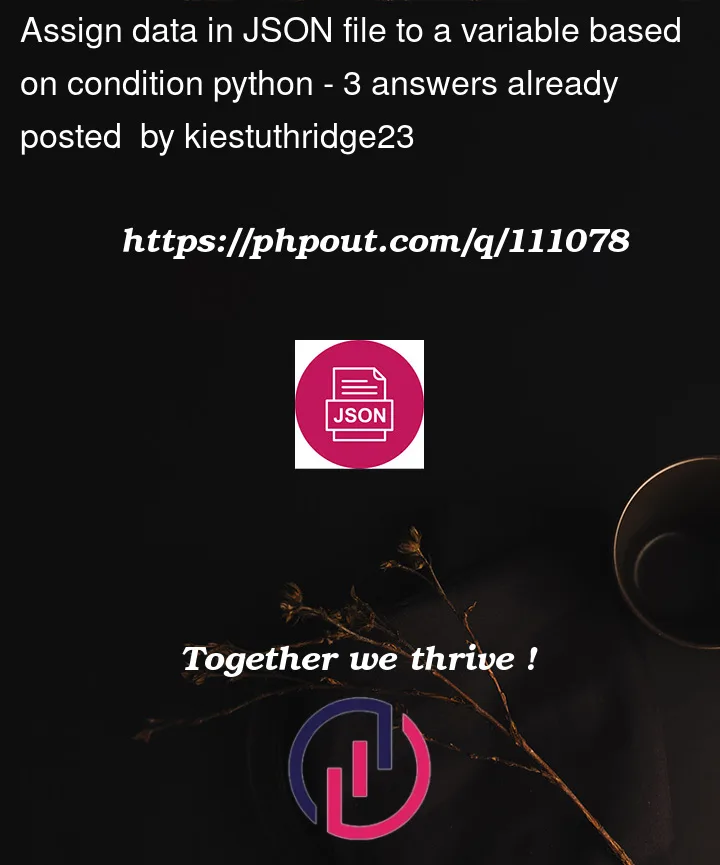I am trying to grab data from JSON file based on what quarter the dates represent. My goal is to assign the data to a variable so I should have Q1, Q2, Q3, Q4 variables holding the data inside. Below is the JSON:
{
"lastDate":{
"0":"2022Q4",
"1":"2022Q4",
"2":"2022Q4",
"7":"2022Q4",
"8":"2022Q4",
"9":"2022Q4",
"18":"2022Q3",
"19":"2022Q3",
"22":"2022Q3",
"24":"2022Q2"
},
"transactionType":{
"0":"Sell",
"1":"Automatic Sell",
"2":"Automatic Sell",
"7":"Automatic Sell",
"8":"Sell",
"9":"Automatic Sell",
"18":"Automatic Sell",
"19":"Automatic Sell",
"22":"Automatic Sell",
"24":"Automatic Sell"
},
"sharesTraded":{
"0":"20,200",
"1":"176,299",
"2":"8,053",
"7":"167,889",
"8":"13,250",
"9":"176,299",
"18":"96,735",
"19":"15,366",
"22":"25,000",
"24":"25,000"
}
}
Now if i try to use the following code:
import json
data = json.load(open("AAPL22data.json"))
Q2data = [item for item in data if '2022Q2' in data['lastDate']]
print(Q2data)
My ideal output should be:
{
"lastDate":{
"24":"2022Q2"
},
"transactionType":{
"24":"Automatic Sell"
},
"sharesTraded":{
"24":"25,000"
}
}
And then repeat the same structure for the other quarters. However, my current output gives me "[ ]"




3
Answers
Thanks to @FrancoMilanese for the info on Pandas
group_byhere is the answer below:With pandas you can read this nested dictionary a transform it to a table representation. Then the aggregation you are required becomes quite natural.
returns
then a simple group_by should do the trick.
Use a dictionary comprehension:
Output: